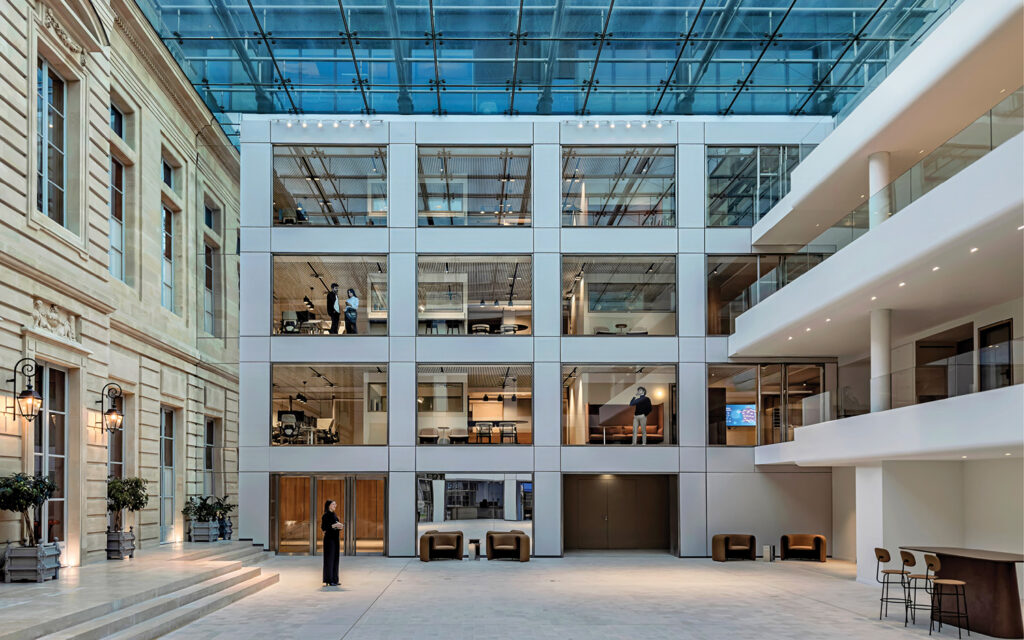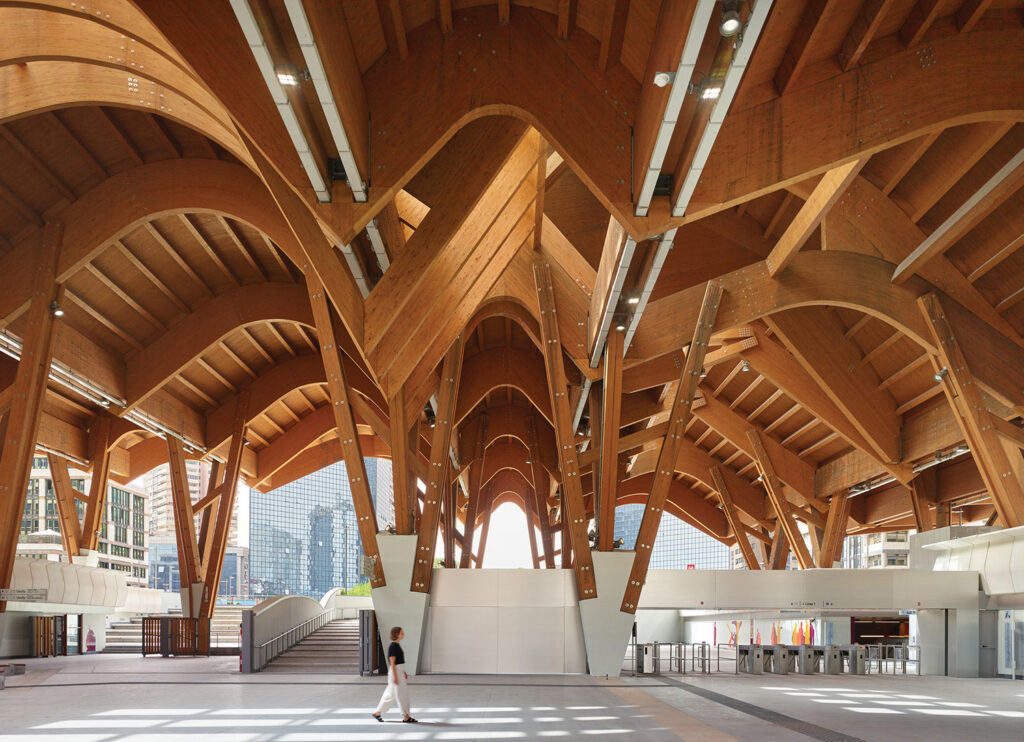
Hickok Cole Creates an Eco-Sensitive Update for the American Geophysical Union’s Washington Headquarters
After nearly three decades, the mechanical systems in the American Geophysical Union’s once state-of-the-art headquarters in Washington were reaching the end of their useful life. For some people, the inevitable slide into obsolescence might trigger sledgehammer fantasies. But for the nonprofit AGU—a worldwide network of 130,000 professional experts and amateur enthusiasts in the Earth and space sciences that tracks the causes and effects of global warming—it was a moment of truth.
“Something major had to be done,” Hickok Cole senior principal and co-owner Yolanda Cole acknowledges. But rather than design a new structure from scratch, her firm was asked to modernize the 1993 Shalom Baranes Associates–designed building to meet net-zero energy goals and create a game-changing case study for the industry. “The AGU decided to walk the walk,” as Cole puts it.

Nearly 20 white papers later, client and firm had mapped out a comprehensive plan of energy reduction, reclamation, absorption, and generation for the 84,000-square-foot project, which includes two underground levels (the lowest a parking garage), five above-grade floors, and a rooftop penthouse and terrace. Two new open stairways connect and reorient different areas: One links ground and lower-level meeting and exhibit spaces; the other forms a central core between the top three floors, where workstations and an open-plan café accommodate 130 staff members. (The building’s second floor is tenant space.) Custom graphics incorporating photographs of the AGU’s main areas of research, both terrestrial and interplanetary, are printed on film applied to interior glass walls to serve identity and wayfinding functions.
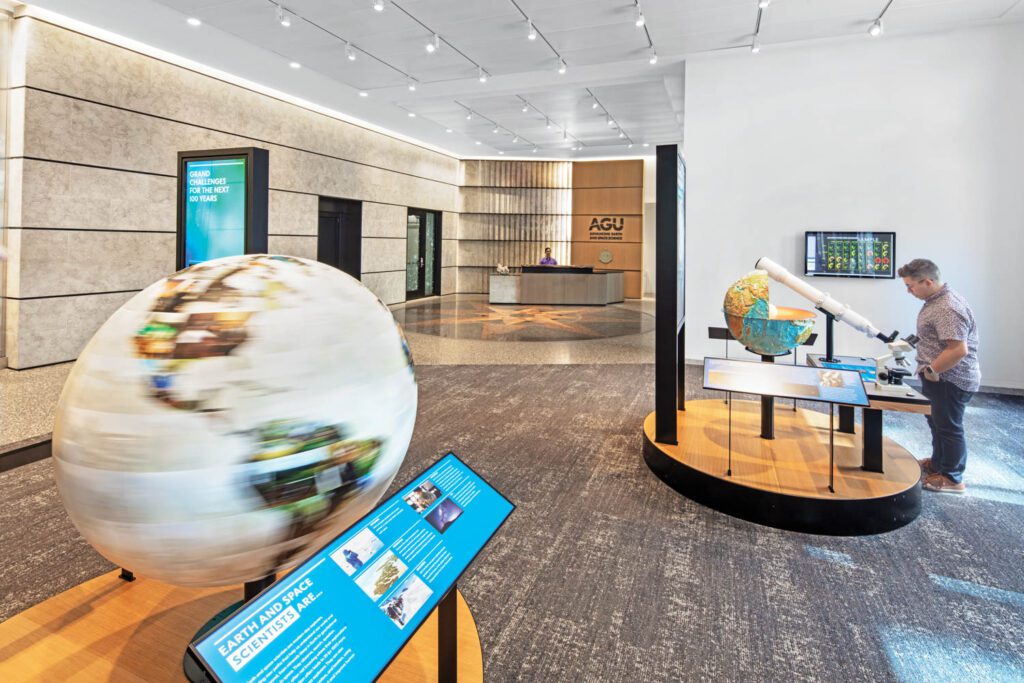
“The organization was very attached to this building because of all the symbolism built into it, starting with its iconic ‘prow’ on the northeast corner,” Hickok Cole senior associate and lead project designer Guilherme Almeida says, referring to the shiplike steel-and-glass form that projected from the structure’s narrowest facade. Since this prominent exterior element only started on the second floor, however, its effect was mostly lost inside. Hickok Cole “democratized” it by opening up the corner and extending the glazing down to near street level; now every floor can experience the prow factor.

In all, the design team replaced more than 900 windows with dynamic, triple-pane, electrochromic glass, which uses sensors to measure sun levels and automatically tints to reduce glare and heat transmission. The fenestration is connected to the building’s interior lighting, so as the glass grows darker, the lights glow brighter. The windows also enable the AGU to limit its use of HVAC systems.
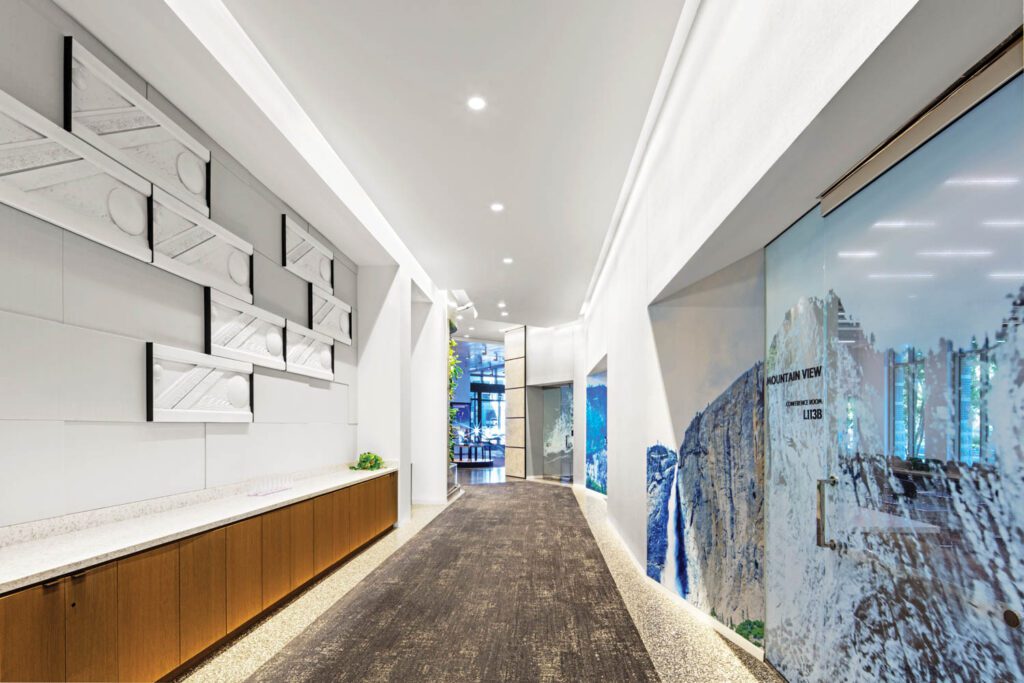
The site’s tight urban footprint did not allow for a geothermal plant, so Hickok Cole tapped another resource 30 feet below ground–the municipal sewers–using a technology developed in Europe to leverage the natural thermal energy flowing through the subterranean network. Screened wastewater is pumped into a heat exchanger with a separate closed-loop system that circulates clean water through coils embedded in drywall and metal ceiling panels to warm or cool the building efficiently.
The other major change is much more visible. To meet energy goals, the building required a larger photovoltaic array than would fit on the existing roof, so the eaves were extended by 4 feet all around—a strategy that neighborhood groups worried would look awkward and cast bigger shadows. Hickok Cole won them over with a dramatic silhouette that accentuates the prow, making the irregular pentagon–shape volume look more triangular.

The solar panels, which utilize every square inch of the rooftop, are supported on a steel lattice frame that allows daylight to penetrate into the penthouse, casts lovely dappled light on the terrace, and minimizes long shadows on the surrounding cityscape. “Now if you look at before shots, the building looks like it forgot its hat,” Almeida jokes.
Not everything is new. The client was adamant that, where possible, every material and fixture be recycled or repurposed, which meant that a beloved inlaid-marble compass on the lobby floor was left intact, and even exit signs were saved and reinstalled. With great care, builders salvaged and cleaned about 5,000 bricks for reuse in the facade. A local construction-aggregate company crushed up old windows, sinks, and toilets to be transformed into sparkly salt-and-pepper terrazzo flooring. Some existing furniture was reupholstered, cherry-veneer paneling was sanded down and lightened, and a polished slab of petrified wood from the AGU’s specimen collection tops the new reception desk as it had the original one.

Such measures did not always save money, but that was not the point. “For the organization, it was a mission that would add to the integrity of their purpose,” Cole explains. “Over time, if industries set up to do these things, it won’t be any more expensive than buying new.”
Perhaps the most consequential space Hickok Cole created, however, is a bare-bones command center on the lower level. It’s where engineers continually monitor the building’s energy consumption and generation, collecting thousands of data points every day in an ongoing net-zero architectural experiment that may lead to further innovations. “If nothing else, this project may convince people that all-glass buildings are not always the answer,” Almeida says. “The surprise takeaway is that you can have a class-A space in a 1990’s building.”




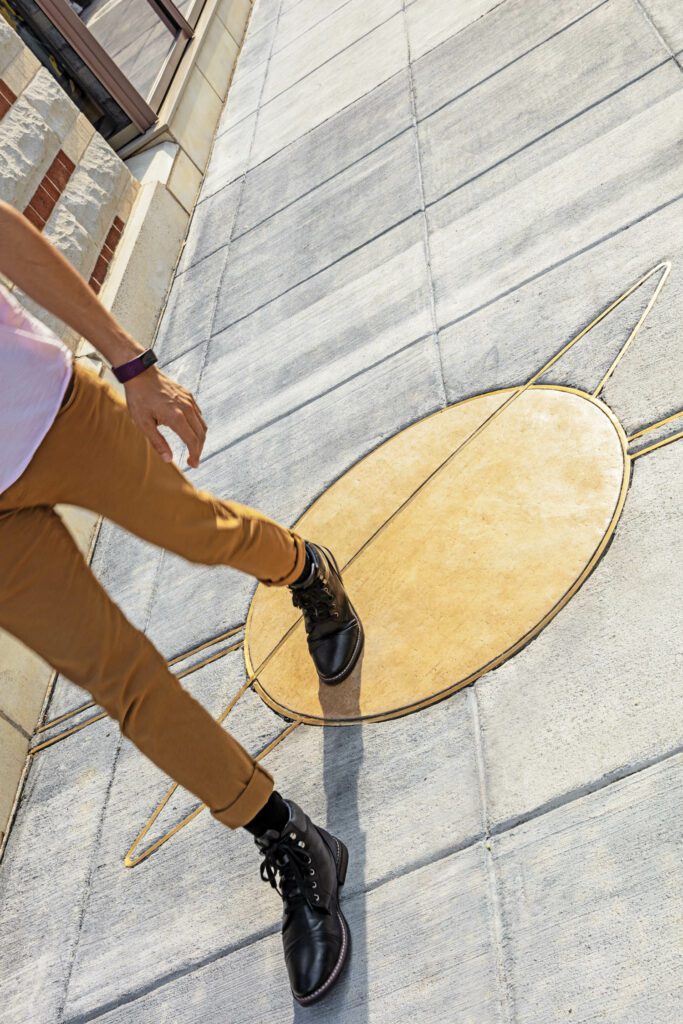
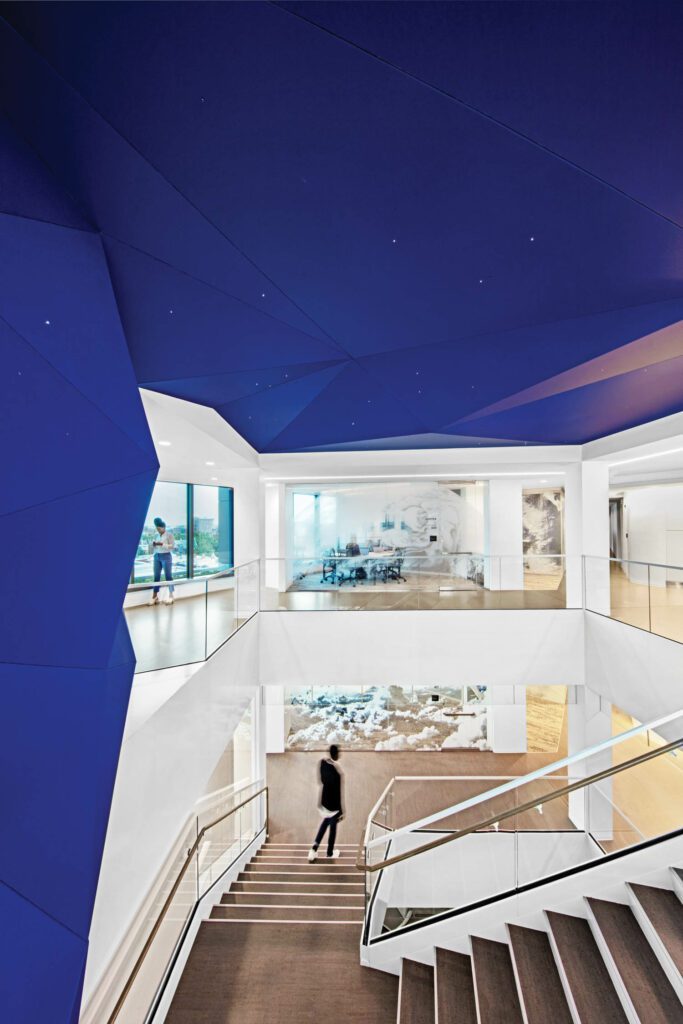


PROJECT TEAM
PRODUCT SOURCES
FROM FRONT
THROUGHOUT
- American Geophysical Union
- Andreu World
- Architectural Wood
- Arconic
- armstrong
- bernhardt design
- Bison
- C&G Partners
- Capri Collections
- carnegie
- Clipso
- Davis Furniture
- Dupont
- Emeco
- Erco
- Eric Laignel
- First Office
- Guilherme Almeida
- herman miller
- Hickock Cole
- Hickok Cole
- Hitt Contracting
- Interface Engineering
- Interface; Shaw Contract
- Jehs + Laub
- JLC-Tech
- Jordi Vilardell
- keilhauer
- landscape forms
- Laura Fisher Kaiser
- Lee and Associates Inc
- Marmi Faedo
- Messana Radiant Cooling; Zehnder Rittling
- MGAC
- Nedlaw Living Walls
- Noé Duchaufour-Lawrance
- Safti First
- Sageglass
- Sherwin-Williams
- Shinnoki
- Solar Panels
- sustainability
- Sustainable Design
- Tadjer-Cohen-Edelson Associates
- vibia
- Vika
- Washington
- watson
- Wausau
- Yolanda Cole
more
Projects
How French Heritage Defines AXA Group’s New HQ
Saguez & Partners unified four different Parisian structures, thousands of employees, and a centuries-old insurance company for AXA Group’s headquarters.
Projects
Discover Centro Direzionale Station’s Bold Transformation
Explore how Miralles Tagliabue–EMBT Architects reimagines Centro Direzionale with a glulam timber ceiling and colorful hues inspired by Pompeian frescoes.
Projects
7 Creative Offices Designed To Encourage Socialization
Cozy lounges, iconic furnishings, energizing colors, funky art—workplaces around the world entice employees with amenities often not found at home.
